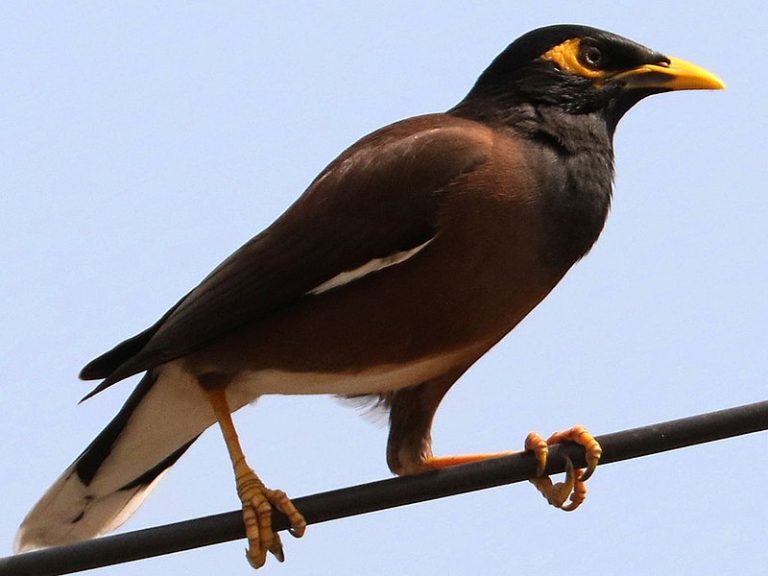Indian mynahs, one of the world’s most invasive species, appear to be laying nests in Kruger National Park (KNP), ruffling feathers with conservationists and competing with indigenous species.

Picture: Wikimedia Common/ Peterwchen
Kruger, a renowned birding destination, has seen a rise in Indian mynahs, a bird from South East Asia that was introduced into KwaZulu-Natal circa 1900 but has multiplied into millions.
These birds tend to prefer urban areas, where they are well adapted, but now seem to be making a permanent home in Kruger, particularly around camps.
‘The mynas have been spreading eastwards through the country, resulting in the populations building up in increasing numbers in our neighbouring towns,’ says Dr Llewellen Foxtrott, a SANParks scientist at Kruger, told Mail and Guardian. ‘These towns have provided ideal habitat, as in all the cities/towns where they have invaded. However, as their numbers started building up outside the boundaries, they started spreading into tourist camps and staff villages in the park.’
In 2010, there were only eight sightings of mynahs in the park but by 2020, there were more than 60 observations – indicating that the rate of spread has dramatically increased.
‘Moreover, the apparent ease with which common mynas appear to adapt to the KNP’s habitat, suggests that these trends will continue if not managed,’ says Klára Pyšková, who co-authored the study on mynahs in KNP with Foxtrott.
‘Their ability to survive in natural areas suggests active management is needed,’ Foxtrott concluded.
ALSO READ: Behind-the-scenes: translocating rhinos with Peace Parks Foundation















